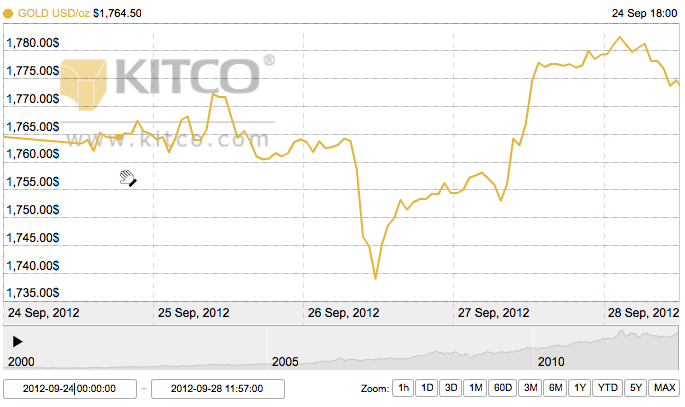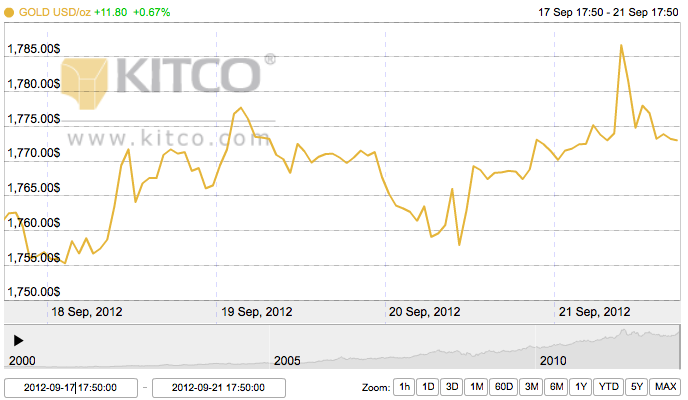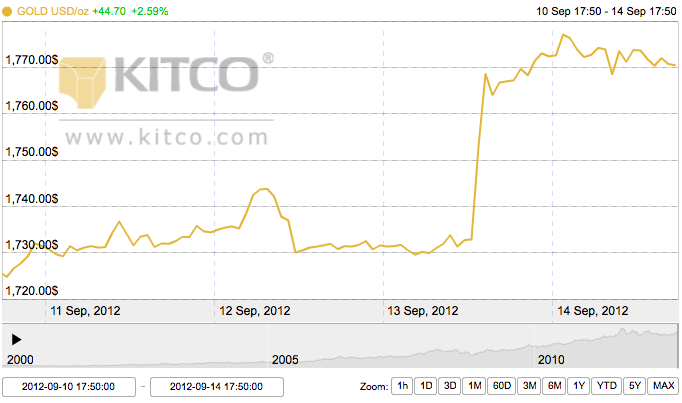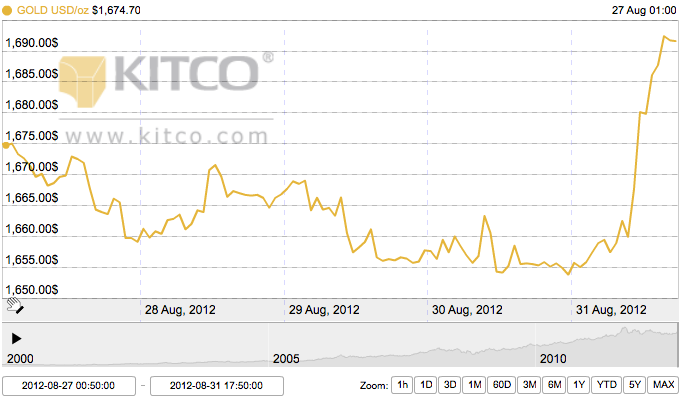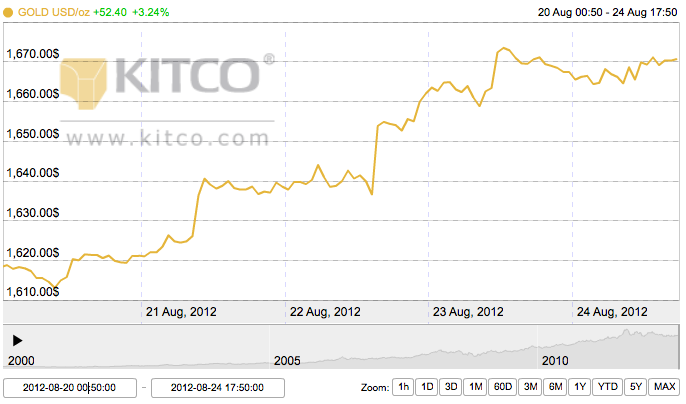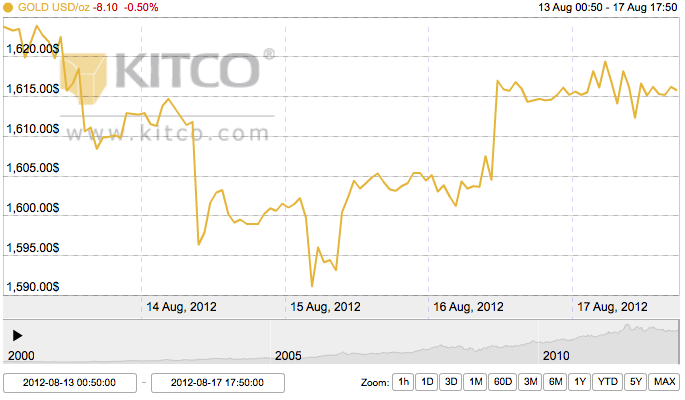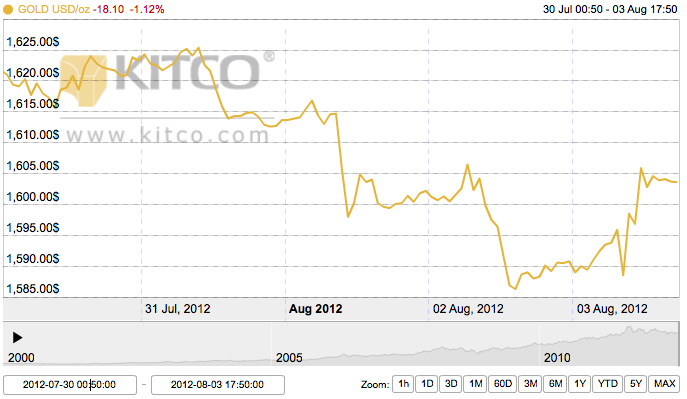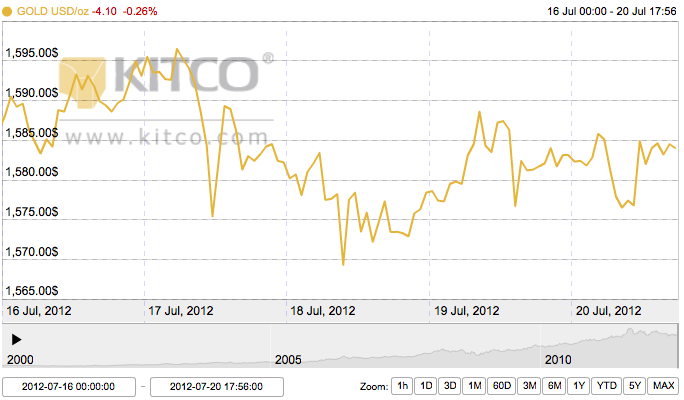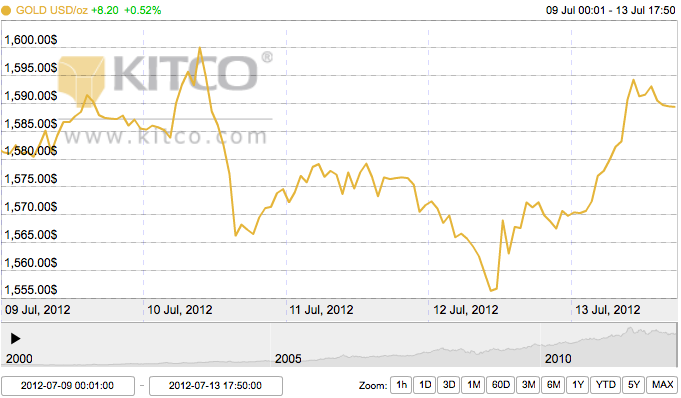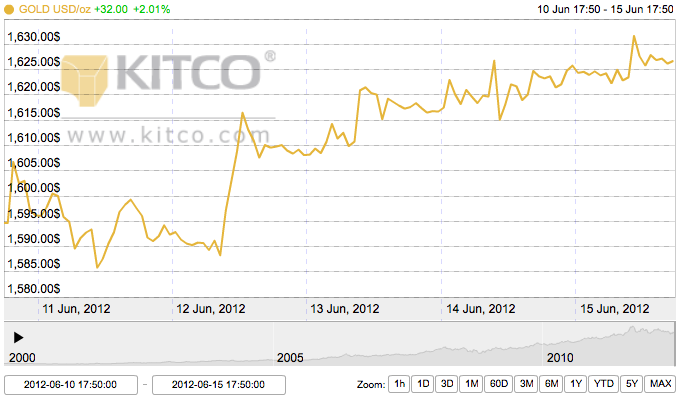Monday Open: $1,764.50
Weekly High: $1,782.50
Weekly Low: $1,739.00
Friday Close: $1,774.70
Gold stayed in a pretty neutral trading range this week with a slight dip occurring in the middle of the week. Some investors expected gold to break the $1,800 bubble this week, but it didn’t happen; instead, gold experienced some trade offs and a reaction to the European financial dilemma in Spain.
Monday opened slightly lower after investors started taking profits over the weekend in response to news of lower crude oil and grain prices. Tuesday saw gold holding strong despite positive U.S. economic data, most likely because of the breakthrough news a couple of weeks ago that the Federal Reserve would be implementing some new fiscal policies that would inevitably boost inflation, and therefore a safe haven in gold. So, even with slight bursts of good news for the dollar, employment or the housing market, gold has the Federal Reserve’s policies to lean on for growth.
The dip that occurred on Wednesday was a risk-off move by traders responding to protests in Spain and Greece against the countries’ austerity measures, a sign that the European debt crisis is once again on the world economy’s radar. There are some worries that the European Union may back down from some of the policies reached during the summer.
Yet, Thursday took a U-turn upwards when Spain announced a new program of spending cuts and tax increases, indicating they may want to borrow money from neighboring economies. For a long time, speculators have been waiting for Spain to ask for bailout money from the European Central Bank, and some see this is a positive sign. This pushed gold up $26.80.
Additionally, China is not necessarily thriving, and many hope that China will embark on economic measures to boost its economy. The bottom line is that no powerhouse world economy has a strong currency right now, and this is the number one reason why gold is reaching the heights that it is.
“If you put together stimulus on three continents … that’s a good inflationary outlook,” George Gero, of RBC Global Futures, said.
Finally, gold ended the week a little lower due not to external forces, but to a wrapping up of the week and the third trading quarter. Investors took their gains from a lucrative quarter, which experienced a tremendous growth of 11% in the July through September period. This was the yellow metal’s biggest quarterly gain in two years, largely fueled by Fed policies.
